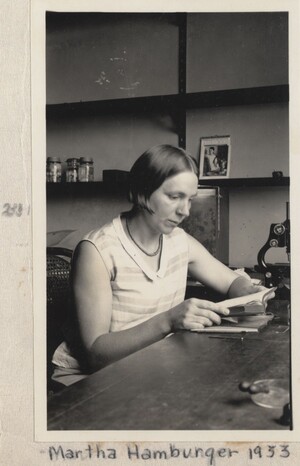In 1932, Spemann nominated Hamburger for a Rockefeller Foundation Fellowship to the laboratory of Frank Rattray Lillie (1870-1947) at the University of Chicago. The specific project was to learn how to apply the tissue transplantation technique from amphibians to the chick embryo, the model organism used in Lillie’s lab. Hamburger accepted, despite the fact that it meant leaving his wife and young daughter (Doris, age 3) behind in Germany. The opportunity was too enticing to turn down.
Suggested citation
Allen, Garland, Dletrich, Michael, Huber, Florian. 2016. "Victor Hamburger and Experimental Embryology." MBL History Project digital exhibit. http://history.archives.mbl.edu/exploring/exhibits/viktor-hamburger-and-experimental-embryology
Bibliography
- Allen, Garland E. "A Pact with the Embryo: Viktor Hamburger, Holistic and Mechanistic Philosophy in the Development of Neuroembryology, 1927–1955." Journal of the History of Biology 37 (2004): 421–75.
- Cowan, W. Maxwell "Viktor Hamburger and Rita Levi-Montalcini: The Path to the Discovery of Nerve Growth Factor." Annual Review of Neuroscience 24 (2001): 551–600.
- Hamburger, Viktor. "The Journey of a Neuroembryologist." Annual Review of Neuroscience 12 (1989): 1–12.
- MBL History Project. (2016). Victor Hamburger Papers. https://hpsrepository.asu.edu/handle/10776/9/discover
- Maienschein, Jane. (2011). Maienschein: 100 Years Exploring Life. Charleston: Nabu Press.

